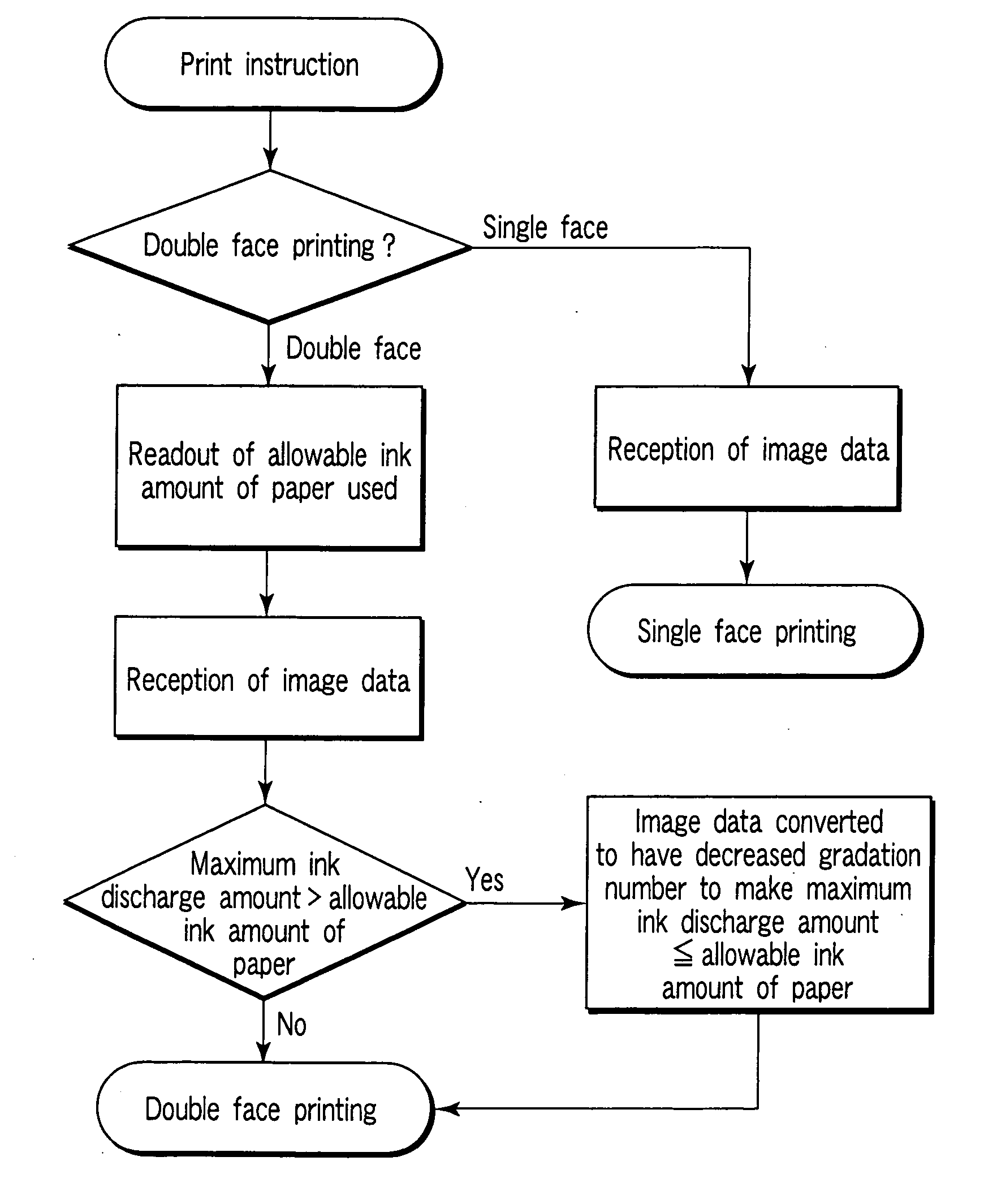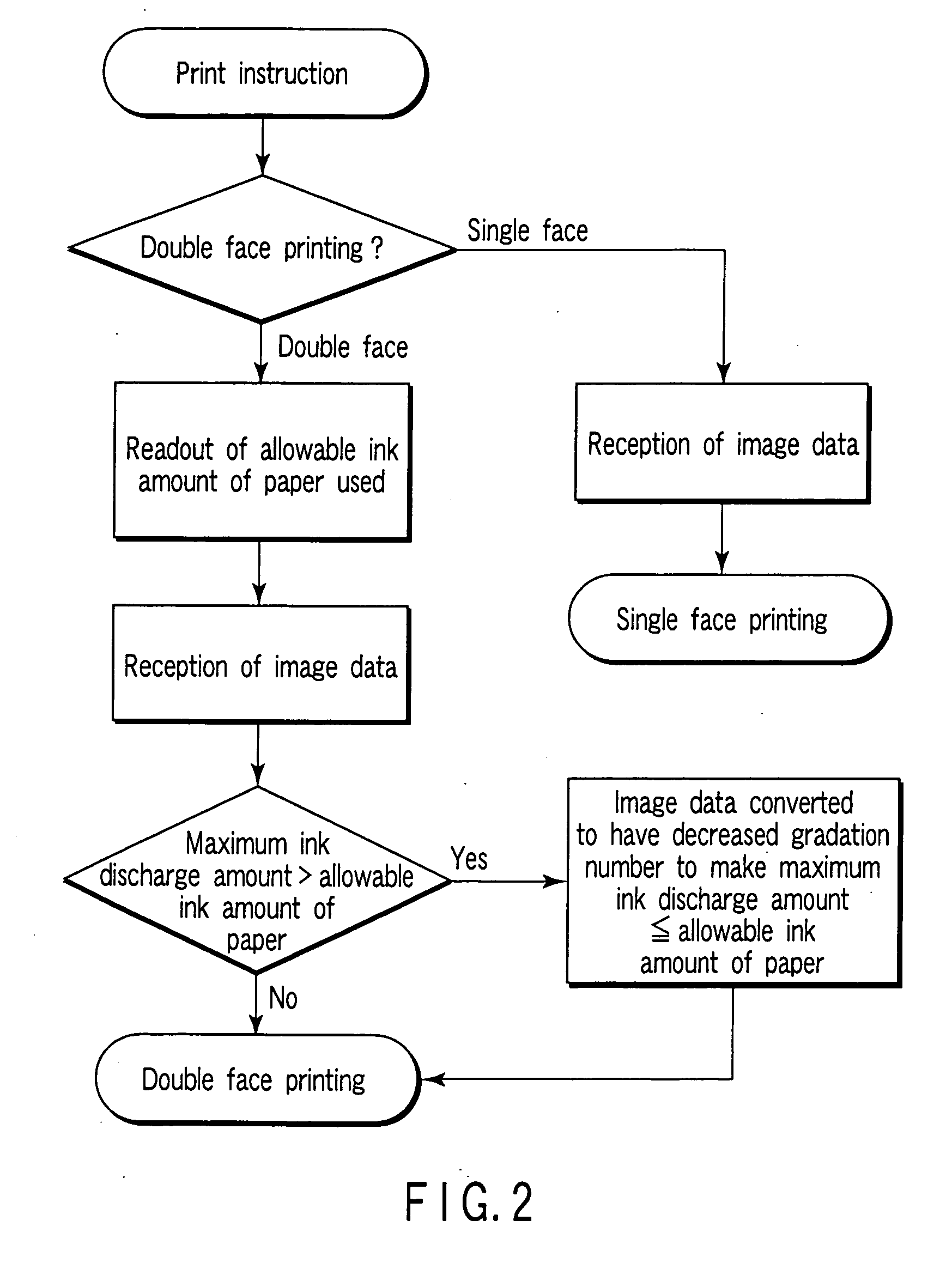Method for inkjet recording
a technology of inkjet printing and inkjet paper, applied in the field of inkjet printing, can solve the problems of increasing the print through density, and achieve the effects of saving paper resources, low print through density, and high printing density
- Summary
- Abstract
- Description
- Claims
- Application Information
AI Technical Summary
Benefits of technology
Problems solved by technology
Method used
Image
Examples
Embodiment Construction
[0039] Embodiments of the invention will be described below.
[0040] In the recording method according to an embodiment of the invention, a non-aqueous ink is used. The non-aqueous ink is an ink obtained by dispersing a pigment in a non-aqueous solvent by using a dispersant. The components contained therein will be described.
[0041] The non-aqueous solvent is a high boiling point solvent that is substantially not evaporated at ordinary temperature (25° C.) and designates general solvents other than water.
[0042] As the solvent, a high boiling point solvent that is substantially not evaporated at ordinary temperature is used among an ester solvent, an alcohol solvent, a higher fatty acid solvent, a vegetable oil, an ether solvent, an aliphatic hydrocarbon solvent, an aromatic hydrocarbon solvent and the like.
[0043] Specifically, examples of the ester solvent include 2-ethylhexyl isononanoate, isononyl isononanoate, isodecy isononanoate, isotridecyl isononanoate, methyl laurate, ethyl...
PUM
 Login to View More
Login to View More Abstract
Description
Claims
Application Information
 Login to View More
Login to View More - R&D
- Intellectual Property
- Life Sciences
- Materials
- Tech Scout
- Unparalleled Data Quality
- Higher Quality Content
- 60% Fewer Hallucinations
Browse by: Latest US Patents, China's latest patents, Technical Efficacy Thesaurus, Application Domain, Technology Topic, Popular Technical Reports.
© 2025 PatSnap. All rights reserved.Legal|Privacy policy|Modern Slavery Act Transparency Statement|Sitemap|About US| Contact US: help@patsnap.com



